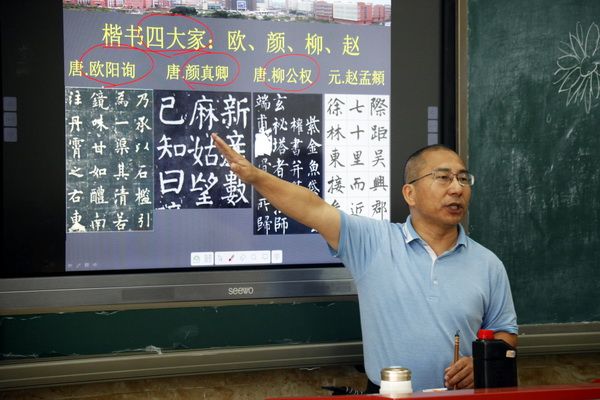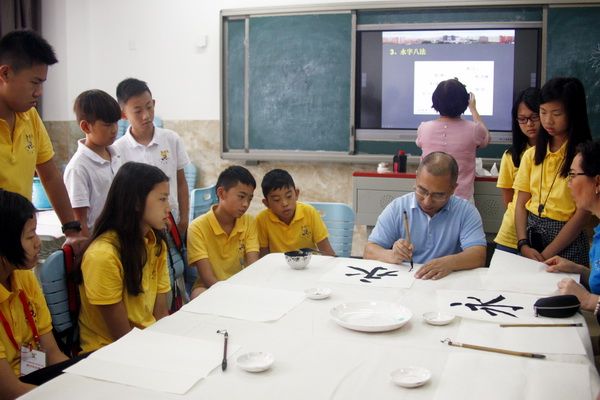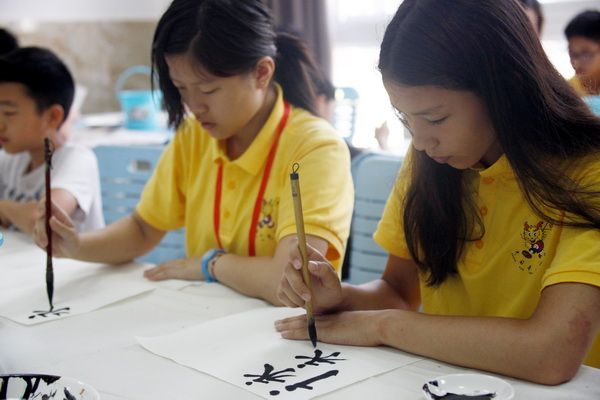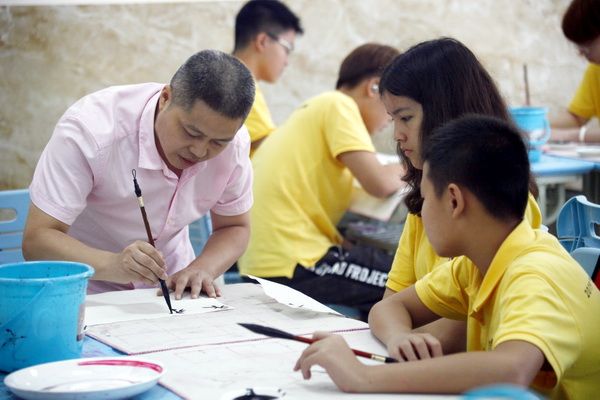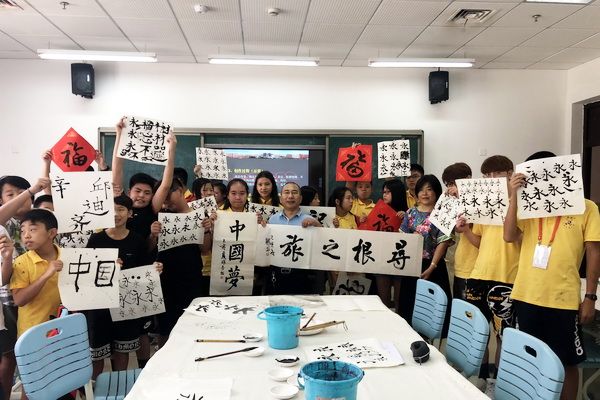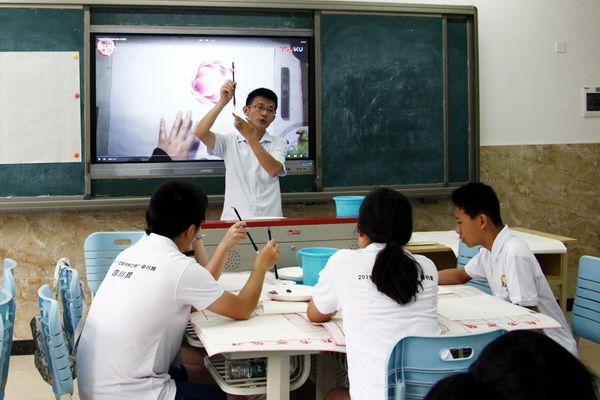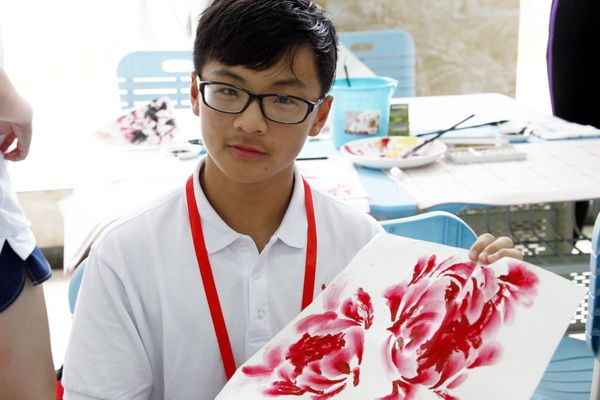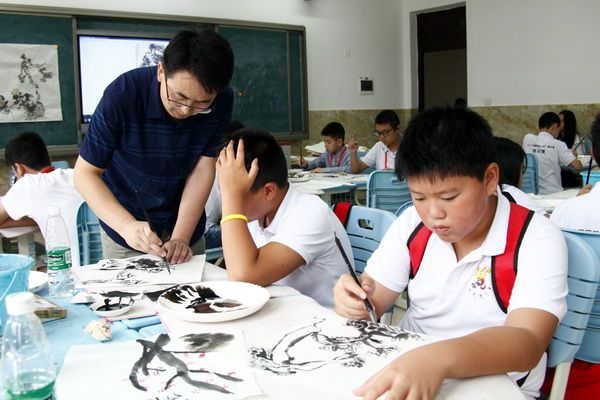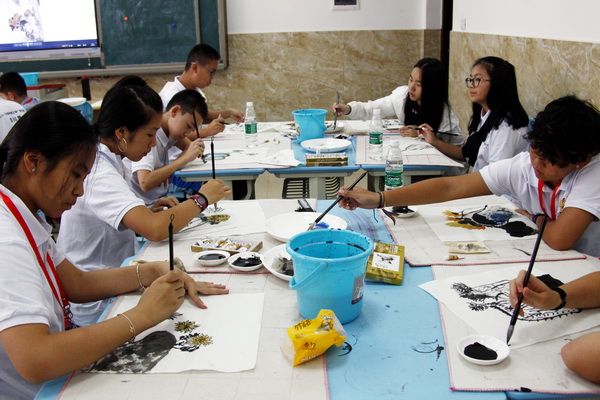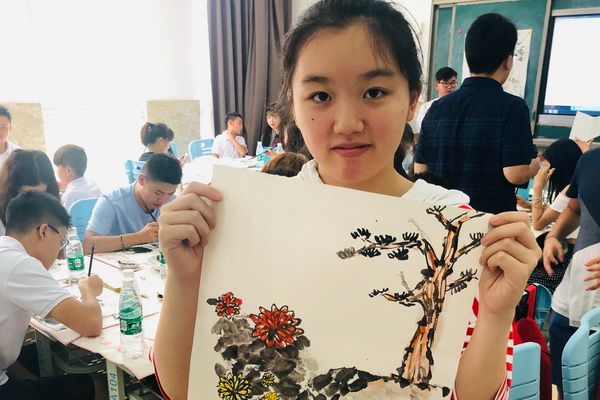On August 8, the sixth day of the 2019 "China Roots - Seeking Journey" Summer Camp in Leshan, Sichuan, Leshan Vocational and Technical College specially invited Zheng Ping, president of the college's calligraphy association, and Tian Ruihai, as well as Zhang Lei and Ma Shixin from the Art and Design Department, to teach the participants Chinese calligraphy and painting.
Chinese calligraphy and painting are among the most fascinating arts in traditional Chinese culture, embodying the rich spirit of the Chinese nation. They integrate the ancient Chinese literati's understanding of nature, society, and related aspects such as politics, philosophy, religion, morality, and literature and art. Therefore, Chinese calligraphy and painting are the best media for promoting Chinese culture and enhancing its influence.
"Lanting silk paper entered the Zhao Mausoleum, and the world's relics still soar like dragons. Yan Gong changed the law to create new ideas, with fine sinews and bones like autumn eagles. The Xu family father and son are also exquisite, with strength outside the characters and hidden edges. The Yishan transmission carving is a model, and the thousand - year - old pen method leaves Yang Bing." In the calligraphy class, Zheng Ping gave the participants a detailed and easy - to - understand lecture on the development of calligraphy, various schools, and the Four Treasures of the Study needed for calligraphy. He focused on introducing calligraphy masters represented by Wang Xizhi and Yan Zhenqing and showed the participants many works of calligraphers.
Then, Zheng Ping picked up the prepared brush and ink and demonstrated to the participants how to write beautiful calligraphy works. To help each participant better understand, President Zheng Ping also emphasized the skills of holding the brush, dipping ink, and moving the brush several times.
After the lecture, the participants began to create calligraphy. In the classroom filled with the fragrance of ink, the participants sat up straight, their brush - holding postures were proper, and they stretched out stroke by stroke on the white Xuan paper, completing one work after another. The participants showed their works one after another. Some had neat handwriting, some were generous and dignified, and although some handwriting was very childish, every stroke showed their seriousness and love for the art of calligraphy.
“Flying through the paper window to take a slanting posture, blown back to the stream surface to dance with the wind. Wandering in the ink - and - wash painting.” In the Chinese painting class, teachers Zhang Lei and Ma Shixin used carefully prepared courseware to gradually show the participants the charm of Chinese painting. During the lecture, they introduced Chinese painting tools such as brushes, ink, inkstones, paper and silk, pigments, and felt to the participants with physical objects.
Rinsing the brush, dipping it in water to achieve an appropriate level of moisture, under the guidance of the teachers, the participants learned to use the "water - carrying - ink" method to paint naturally shaded branches and trunks, and then used the same method to paint the gorgeous peonies. While learning the peony painting technique, they felt the prosperity of the golden age described by "Only the peony is the true national color, and when it blooms, it stirs the capital."
Although everyone was first - time learners and creators of Chinese painting, their works were truly eye - catching. As the saying goes, "The student surpasses the teacher," and each young participant showed great creative talent.
Chinese calligraphy and painting, as representatives of traditional Chinese culture, are precious intangible cultural heritages of our country and an important part of Chinese culture. It is the inescapable responsibility of every descendant of the Yan and Huang Emperors to inherit, protect, and develop the art of Chinese calligraphy and painting.
With the end of today's classes, the 8 - day summer camp is also drawing to a close. Through the study and experience of traditional Chinese cultural courses, leaders, teachers, and participants all said that they had often heard the song "Chinese Heart" before but did not understand the connotation of "Chinese Heart." This trip to Leshan has been very rewarding. Everyone now has a clear understanding of what "Chinese Heart" means and has experienced the true significance of the roots - seeking journey.
